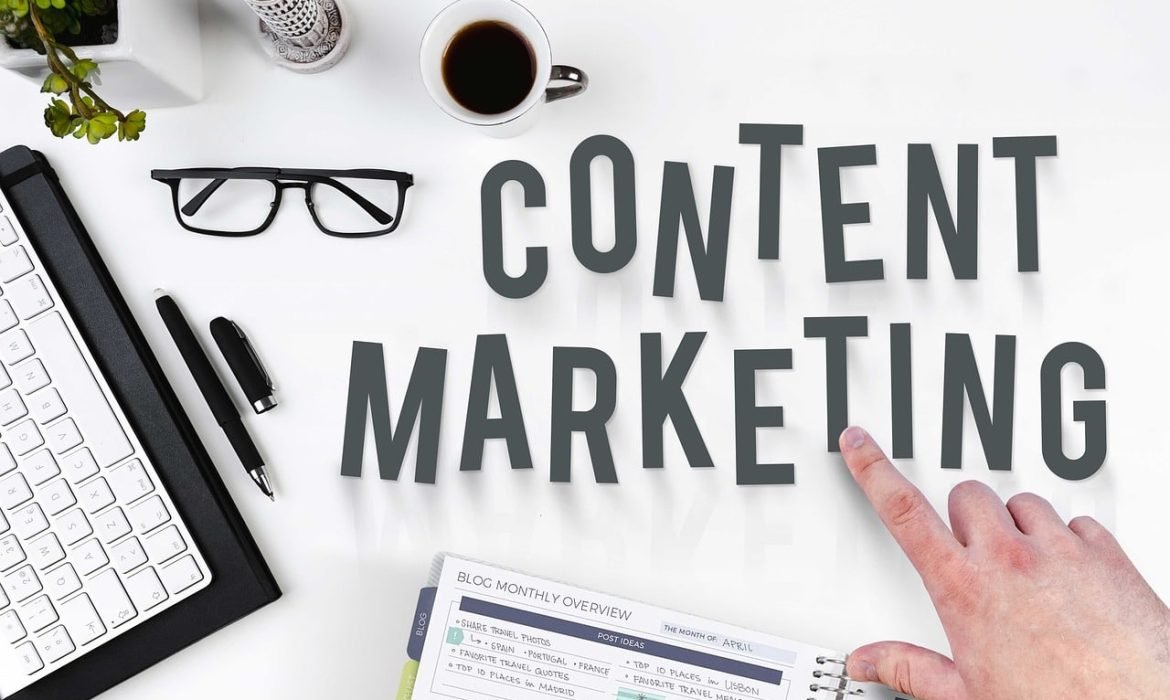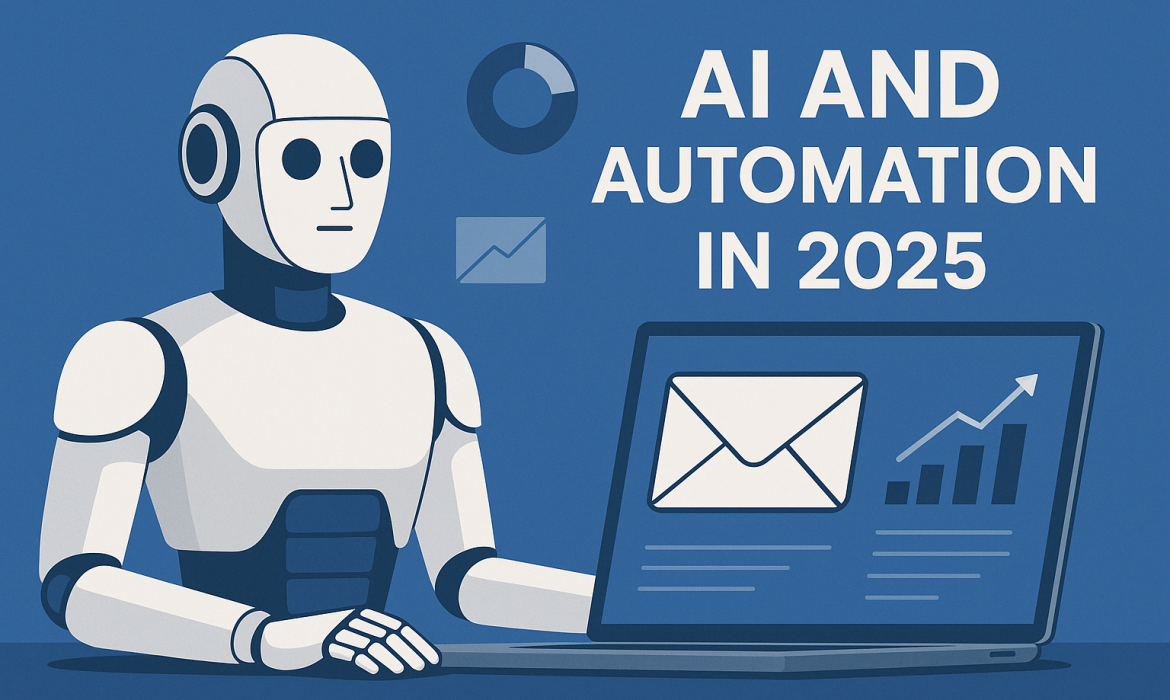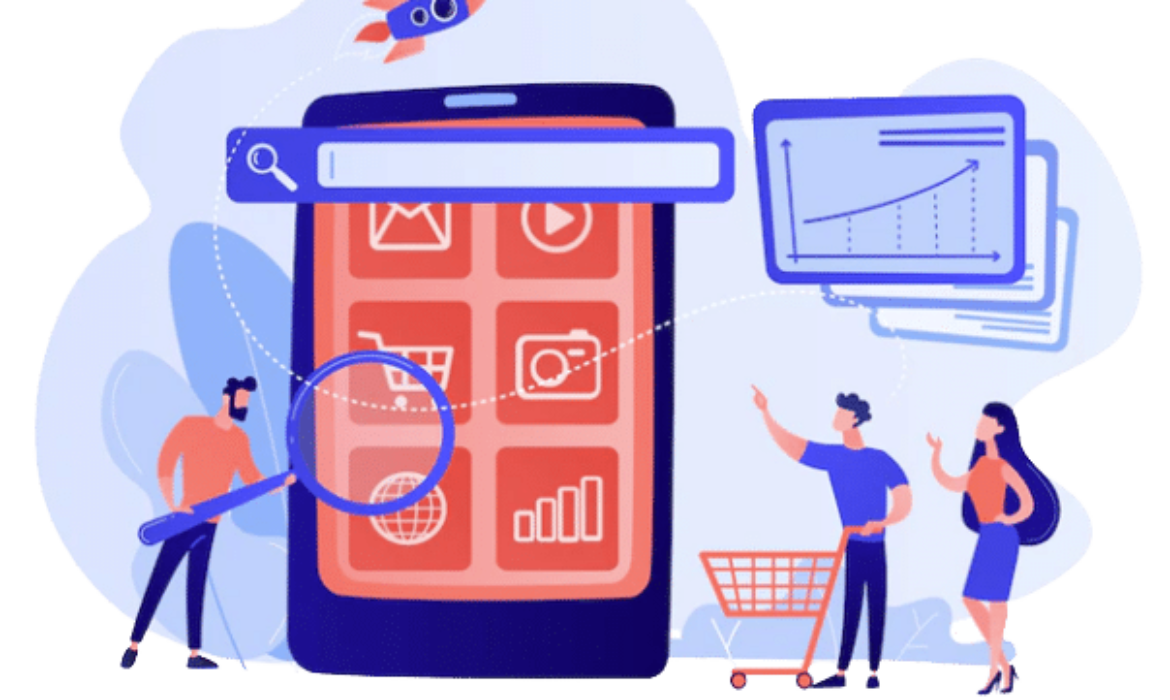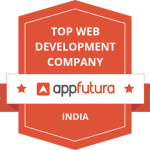PPC vs SEO: Which One Will Bring You Better ROI in 2025?
If you’re running a business in 2025, there are chances you have invested in online marketing for maximum visibility and revenue. But how do you know where to spend that money on PPC or SEO? No worries if you do not know! This blog will help you understand both. You’ll learn what PPC and SEO actually are and how much they cost. And most importantly, which one can bring you better ROI in 2025?
Let’s Understand First What Actually PPC and SEO Are
What is PPC?
PPC, or Pay-Per-Click, means you pay each time someone clicks on your online ad. After clicking, users are redirected to your service or product page to check what you offer. If the user likes the offering, they make a purchase. Otherwise, they only get brand awareness. And to make ads, the most common platform is Google Ads. Here, you choose a keyword and set a budget. Your ad shows up at the top of Google search results.
The biggest advantage of PPC is that it brings visitors to your site almost instantly. The downside is that as soon as your budget is used up by clicking, the traffic stops.
What is SEO?
SEO, or Search Engine Optimization, makes your site show up in the free (organic) search results. You don’t pay for each click. But you do have to earn organic traffic. That means creating useful content, putting the proper keywords in, and getting your site to work properly.
It takes time to move up the rankings. But once you’re there, the traffic is free and steady.
Let’s Understand with a Cost Breakdown
How much does PPC cost?
PPC can get expensive, depending on the industry. For example, a law firm may pay $20–$50 for a single click. A local bakery might pay only $1–$2. You can set your own daily or monthly budget. But you’ll need to spend more in 2025 as ad costs keep rising.
Also, you may need to hire someone to manage your PPC campaigns. Poor targeting or bad ads can waste money quickly.
How much does SEO cost?
SEO does not charge anything per click, but it is not free. You may have to shell out money when it comes to content or have to hire an SEO talent or purchase instruments. The price an average small business will pay on a monthly basis is between 500$ and 1500$. However, with SEO the efforts you put in are cumulative unlike in PPC.
Once your pages rank well, they can bring in traffic without extra spending.
Which gives better ROI on cost?
PPC gives faster ROI, but only while you keep spending. SEO has slower results, but the long-term ROI is usually better. Over a 12-month period, SEO tends to be cheaper per lead or sale.
Let’s Talk About the Results
If you launch a PPC campaign today, you might get leads by tonight. That’s why businesses like PPC for new product launches or events. It works fast.
SEO is different. You could wait 3 to 6 months before you see results. Sometimes longer. Google wants to see that your content is useful and trustworthy. So, SEO needs patience.
But here’s the thing once your site ranks well, it can stay there for a long time. Even if you stop working on it for a while. That means more traffic for less ongoing effort.
So if you want results quickly, PPC is the winner. But if you think in the long term, SEO is the winner.
Factor to Consider: Traffic Quality & Buyer Intent
Now let’s talk about the kind of traffic each brings.
PPC lets you target specific keywords, age groups, locations, and even devices. You can reach people who are ready to buy right now. That’s why PPC often has higher conversion rates.
SEO brings in people who are doing research or comparing options. These users may not buy right away. But they’re building trust with your brand. Over time, this trust can turn into more sales or repeat customers.
So, if you want instant buyers, PPC is stronger. If you want long-term customer relationships, SEO wins.
Next Factor: Algorithm Changes and Platform Dependency
Search engines change their rules often. These are called algorithm updates. If your website doesn’t follow the new rules, your rankings can drop overnight.
PPC has fewer of these problems. You set your bids and budget, and your ad shows up. But ad platforms can also change policies. Your ad account could get suspended for small mistakes.
Also, PPC makes you depend fully on paid platforms. SEO gives you more control over your website and content. You’re not renting space—you own it.
So both have risks. But SEO gives more stability in the long run if you follow best practices.
Third Factor: Industry and Business Type Considerations
Some businesses do better with PPC. For example, emergency services, new product launches, or seasonal offers often need fast traffic. PPC gives them that.
Other businesses benefit more from SEO. If you run a local service—like plumbing, dental care, or legal help—SEO helps you show up in local search results. It builds trust over time and helps you get found without paying for each click.
In 2025, industries with high competition may find PPC too expensive. SEO becomes a cost-saving method in the long term. But if your business needs fast action, PPC may still be worth the cost.
So, the “best” option really depends on what kind of business you run, how fast you need results, and how much you can spend.
The Power of Combining PPC and SEO
You don’t always have to choose between PPC and SEO. In fact, the smartest businesses use both together.
Let’s say you run a new product campaign. Use PPC to get quick attention and traffic. Use SEO to publish helpful content and reviews about the product. Over time, that content will start ranking and bring traffic without more spending.
Also, PPC data shows which keywords people click the most. You can use this data to plan your SEO content. It’s a great way to test what works.
Conversely, SEO assists you in establishing brand trust. And trust enhances how efficiently your PPC ads work. Users have a higher tendency to click an ad from a brand they trust.
So don’t choose one or the other. Instead, mix them both. Employ PPC for quickness. And SEO for long-term stability.
Which One Will Bring Better ROI in 2025?
Now let’s answer the big question: which one gives better ROI in 2025?
PPC gives faster results, but ad costs are rising every year. It works well if you need leads quickly or have a big marketing budget.
SEO takes more time, but the return lasts longer. It’s a good option for small businesses or anyone looking for long-term savings.
In 2025, ad competition is higher than ever. That means PPC costs may go up, and it may get harder to stand out. At the same time, good SEO content is still helping websites get free, ongoing traffic.
So here’s the answer: if you want quick leads and have money to spend, go for PPC. If you want a steady return that grows over time, invest in SEO. If you want the best of both, combine them.
Conclusion
PPC and SEO are both useful tools. But they serve different goals. PPC is great for speed and targeting. SEO is better for trust and long-term results. In 2025, both are still very important.
If you’re not sure where to start, no worries. We are here to help! Contact Geek Informatic & Technologies Pvt. Ltd. Plan your strategy today. We will let you know what works for you. CONTACT US TODAY!
Long-Form vs. Short-Form Content: What Works in 2025?
With technological advancements, the internet is gaining thousands of new users every day. Not only are users increasing, but marketers are also getting tough competition in numbers. Users are getting wide options and loads of content for their searches. However, with a lot of content options, users’ attention spans are also declining. Now, internet scrollers are more informed and expect valuable content from what they consume. This makes marketers think about their content and pushes them to deliver better content.
There are two types of content that are catching the eyes of users. And these are long-form content and short-form content. In this blog, we’ll compare both content types, explore their benefits, and help you decide what works best in 2025.
What is the content dilemma in 2025? Let’s find out
The foundation of digital marketing is always content. Be it a startup, an established brand, or a solo creator, the success of your online strategy depends a lot on the type of content you produce. Here, there are two types of content that rule the internet. And the biggest question facing marketers today is: Should you focus on long-form content or stick to bite-sized short-form content? Let’s talk about the long-form content first:
The case for long-form content: depth, SEO, and authority
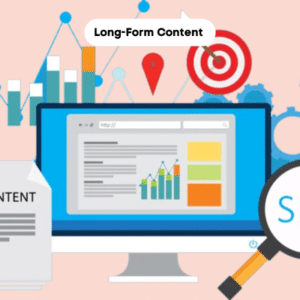
Long-form content usually refers to articles, blogs, or guides that go beyond 1,000 words. These writing formats talk deeply about the topics. They offer well-researched and comprehensive information. In a world where Google and AI-driven search engines are prioritizing useful content, these long-form pieces are still providing valuable content for users.
Not only that the other major benefit of long-form content that it works best in SEO terms. Longer articles tend to rank higher because they cover a topic in more detail, include natural keywords, and answer user questions more effectively. This means more organic traffic over time.
In 2025, people want answers that solve real problems. A 1,500-word blog that explains how to start a podcast will likely outperform a 300-word summary. That’s because longer content builds trust and shows expertise. It’s also more likely to earn backlinks, which further boosts search engine rankings.
Another advantage is that long-form content keeps readers on your site longer. This helps reduce bounce rate and signals to search engines that your page is valuable. If your goal is to build authority in your niche, especially in B2B, education, or tech, this type of content is a smart option to work on.
Remember: It is important to note that quality matters more than word count. A long piece filled with fluff won’t work. The key is relevance, clarity, and structure.
The power of short-form content: speed, engagement, and social reach
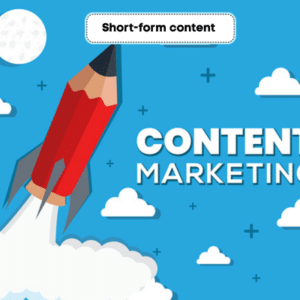
On the other hand, short-form content includes everything from 15-second videos and infographics to 300–800 word blog posts and social media updates. This type of content thrives in fast-paced digital spaces where attention is limited.
One of the biggest strengths of short-form content is its ability to grab attention quickly. Platforms like TikTok, Instagram Reels, and Twitter have made this format extremely popular. It’s easy to consume, share, and comment on. That means more engagement and faster reach.
In 2025, mobile-first consumption continues to grow. Most users scroll through content while commuting, waiting in line, or during breaks. They don’t always have time or patience for long reads. Short-form content works best for them. This content offers instant value, whether it’s a quick tip, a product teaser, or a visual summary.
This format is also easier and faster to produce. You can respond to trends in real time or publish updates frequently without draining resources. For startups or influencers working with limited budgets, short content allows them to stay active and visible.
Moreover, not every message needs a deep dive. A restaurant announcing a new menu item or a fitness coach sharing a workout tip can achieve more with a short Instagram reel than a 1000-word blog post.
However, the downside is that short-form content may lack depth. It often needs to be supported by longer pieces or links for users who want more detail.
What works best in 2025: context, audience, and channel
So, which one should you choose, long-form content or short-form content?
In 2025, choosing between long-form content and short-form content is no longer a black-and-white decision. This is because each format serves a purpose, and the most effective content strategies use both in a balanced way. Moreover, the answer depends on your audience, your goals, and where the content will be shared.
Long-form content
- If your goal is to educate, build thought leadership, or improve your content for SEO, then long-form content is the way to go. It works well on websites, blogs, LinkedIn, and platforms where users expect in-depth insights.
- Long-form content is perfect for in-depth storytelling, educational content, and boosting content for SEO. It helps brands build authority and maintain strong search visibility.
Short-form content
- If your goal is to entertain, increase brand awareness, or drive quick engagement, then short-form content is ideal. It shines on social platforms like Instagram, TikTok, and Facebook, where users are in “scroll mode.”
- Short-form content, on the other hand, is excellent for grabbing attention, driving engagement, and staying visible in fast-moving digital environments. It’s easy to produce and works well for mobile-first audiences.
You need to think about the buyer’s journey, like when they may want your content. You should be aware that the stage they prefer short-form content that delivers quick, digestible insights. As they move into the consideration and decision stages, users seek deeper understanding, trust, and evidence. This is where long-form content proves invaluable. So, combining both formats ensures you’re meeting your audience’s needs at every touchpoint.
Many successful brands are now using hybrid content strategies. For example:
- A short video teaser can link to a full blog post.
- A blog post can be broken into bite-sized social posts.
- An infographic can summarize a long article for email marketing.
Best practices for identifying what form of content works
Analytics tools play a key role here. So you don’t rely on assumptions. Use data to track which format delivers the best engagement, traffic, and conversion rates across platforms. Dive into metrics like bounce rate, time on page, and click-through rates to understand user behavior.
A/B testing different content lengths, headlines, and styles can reveal exactly what resonates with your target audience, helping you refine and optimize your content strategy continuously.
Also, consider the lifespan of your content. Short-form content can generate fast engagement but often fades quickly. In contrast, long-form content tends to deliver ongoing traffic and SEO value over time. Recognizing this difference allows you to balance immediate impact with long-term growth, helping you invest your content resources more wisely for sustained results.
Conclusion: Strike the Right Balance for Maximum Impact
Ultimately, your content strategy should be flexible. Understand your audience, define your goals, and select the format that best fits the context. Test, learn, and adapt as needed. In the end, it is not about long vs. short-form content. It is about being smart, strategic, and user-focused with every piece of content you create.
For valuable content creation, you can contact Geek Informatic & Technologies Pvt. Ltd. We assist all niche marketers, whether you want technical content, whitepapers, case studies, or short or long-form blogs, we do it all.
What Marketers Need to Know About AI and Automation in 2025
In 2025, marketing automation and artificial intelligence are changing how businesses connect with customers. Marketers now use smart tools to work faster. In their marketing campaigns, with the help of AI tools, they personalize customer messages to get better results. What’s more! Well, this blog explains what AI and automation really mean, their benefits, common mistakes to avoid, and tools you can use to succeed.
The 2025 Big Year for AI and Marketing Tools
In 2025, AI is no longer limited to tech companies. It is spreading its wings in retail, healthcare, finance, and even small businesses. New AI tools with advanced features are coming into the market. AI streamlining operations, personalizing customer experiences, and collecting deeper insights into the market. AI is now a must-have marketing tool for businesses that want to stay competitive.
Customers now expect faster, more relevant communication. They want brands to understand their preferences and respond to them instantly. AI helps marketers meet customers’ expectations through hyper-personalized content and smart recommendations. AI helps in real-time engagement and making campaigns feel more human and responsive.
Not only that, AI enables smarter budgeting by helping companies analyze performance data and automate low-value tasks. AI focuses on what drives results. This shift supports higher ROI and reduces waste in ad spending and campaign management.
Furthermore, every small and large company is using AI. It is an affordable and user-friendly tool that works for all startups and medium-sized teams. With a simple interface and pre-built automation, even non-technical marketers can use AI to create impactful, data-informed campaigns.

What AI and Marketing Automation Really Mean
AI in marketing means using natural language processing to create predictive campaigns, analyze data, and spot patterns. This technology makes smart decisions by enabling everything from personalized product suggestions to identifying leads with the highest conversion potential.
Moreover, AI do more than just automate tasks. It helps marketers work smarter by producing insights and giving tailored content. This helps in creating instant strategies based on user activities. When combined, marketing automation and artificial intelligence enable running personalized, timely, and effective campaigns at a large scale. This capability was out of reach just a few years ago.
Furthermore, marketing automation alone, on the other hand, focuses on simplifying repetitive marketing jobs. These include sending out emails, managing social media posts, and guiding leads through pre-set workflows. The traditional rule-based methods are evolving with automation and AI. This changing process involves a shift from basic triggers to smart actions that adjust to each customer’s behavior.
Benefits of Combining AI with Marketing Automation
Integrating AI with marketing automation delivers real, measurable benefits that go far beyond time savings. Let’s have a look:
- Smarter Personalization
AI analyzes customer behavior, preferences, and engagement history to deliver personalized content automatically. This leads to higher open rates, more clicks, and better conversions in ad campaigns.
- Improved Efficiency
Routine tasks like list segmentation, A/B testing, and lead scoring are handled by AI, freeing up marketers to focus on strategy and creativity. Campaigns run faster and with fewer errors.
- Better Decision-Making
AI identifies what’s working and what’s not through real-time data analysis. Marketers can adjust strategies quickly, backed by insights instead of guesswork.
- Higher ROI
Combining AI with automation ensures every message is relevant and well-timed. This reduces wasted ad spend, increases customer engagement, and ultimately drives more revenue from the same or even smaller budgets.
In short, this combination helps marketers work smarter, not just harder.
Top AI and Automation Tools Marketers Are Using in 2025
Here is a detailed look at some of the top marketing automation artificial intelligence tools for marketers:
AI-Powered Content Creation and Optimization
Jasper
This tool uses AI to create different types of marketing content. It produces ad copy, emails, landing pages, articles, and social media posts. It also connects to knowledge bases to ensure that the content remains true and accurate.
Clearscope
This tool aims to boost content for SEO. It looks at content quality and offers ways to make it better.
Grammarly
This tool gives AI-powered grammar and style checks. You can set up brand style guides, too.
BrandWell
This platform offers a full set of AI-powered content marketing tools. It includes site checks, content creation, backlink adding, and fine-tuning.
AI-Powered Marketing Automation
Sprinklr Marketing
This big platform handles many marketing tasks. It covers social media digital campaigns and old-school marketing. It uses AI to step up automation.
HubSpot
This platform gives you a bunch of marketing automation tools. You get email marketing landing pages, lead nurturing, and data tracking.
Salesforce Marketing Cloud
This platform lets you run personal campaigns, link up with CRM, and automate tasks to smooth out marketing work.
ActiveCampaign
This platform offers full AI-powered workflows and personal touches. It shines in email marketing.
Klaviyo
This platform stands out for its easy-to-use interface. You can drag and drop to set up workflows.
Customer.io
This platform excels in strong workflow automation. It gives you lots of marketing channels to automate.
Zapier
This platform allows users to connect over 2,000 apps and automate tasks without needing to write code.
AI-Powered Social Media Management
FeedHive
This tool uses AI to recycle content and conditionally post, optimizing social media engagement.
Buffer
This tool provides scheduling and multi-channel campaign management features, enhancing social media strategy.
Flick
This tool acts as an AI copilot for social media management, integrating AI into the entire process.
Predis.ai
This tool generates carousels and videos for social media, along with competitive analysis.
Publer
This tool helps generate post text and images, including text-to-image AI generation.
Other AI Marketing Tools
Delve AI
This platform provides digital twins of customers, allowing marketers to engage with virtual representations of their audience.
GWI Spark
This tool leverages proprietary consumer data to provide unique and high-quality insights.
Optimove
This platform personalizes marketing across channels using AI to understand customer behavior and optimize campaigns.
These are marketing automation with artificial intelligence tools available to marketers. Choose the right tool for your specific needs and goals, whether it’s content creation, email marketing, social media management, or other marketing activities.
Common Pitfalls to Avoid in 2025
As AI and automation become standard tools in marketing, many teams risk falling into avoidable traps. Here are key pitfalls to watch out for:
- Over-Automation Without Human Touch
Relying too heavily on automation can make communication feel robotic. Customers still value authenticity. Marketers must balance automation with genuine human-centered content and interactions.
- Poor Data Quality
AI is only as good as the data it learns from. Outdated, incomplete, or inaccurate customer data can lead to irrelevant targeting and poor campaign performance. Regular data hygiene is critical.
- Lack of Integration Across Tools
When AI and automation platforms don’t sync with your CRM, email software, or analytics tools, you lose efficiency and visibility. Ensure systems are well-integrated for a seamless marketing operation.
- Misunderstanding AI’s Limits
AI can make decisions better, but it is not foolproof. Treat it as a powerful assistant, not a replacement for strategic thinking. Marketers must still guide the vision, messaging, and customer experience.
Final Thought: This is an AI-Powered Landscape
As we move towards the coming years, marketing automation and artificial intelligence technology will advance even further. New tools for automation will come into the market, and new features will be introduced. Therefore, it is better that you adopt AI tools in your business so that you can take advantage of them today and in the coming years.
Let Geek Informatic & Technologies Pvt. Ltd. Help You Lead with AI
At Geek Informatic & Technologies Pvt. Ltd., we help businesses with AI automation marketing campaigns for the digital world. Whether you need assistance with Google Ads campaigns, SEO, or Content Creation, we are here to help.
Maximizing Your Business Potential with Local SEO and Enterprise eCommerce SEO
Every business, regardless of its size or economic status, needs to find ways to increase its web presence. This is important whether the business is a small shop or a huge company. In the modern world of high technologies, attracting new clients is a constant requirement. This implies that it is necessary to become an expert in SEO, specifically in Local SEO and Enterprise e-commerce SEO.
Local SEO is all about optimizing the website based on what people look for in their area. The second specialization of SEO in enterprise e-commerce is focused on addressing the challenges that large online stores face. By adopting these SEO tips, you will make your site visible, and more people will visit it, which will, in turn, enhance sales.
This blog will explain the most crucial elements of Local SEO and Enterprise e-commerce SEO. It will answer questions like why these parts are critical, how to use them effectively, and why one should work with a Local Google Specialist. If you desire your business to grow, especially if you own a small or big business, you must acquire these SEO techniques.
How does Local SEO work?
Local SEO refers to optimizing a website to appear in searches related to its location. Such searches mostly take place in Google and other search engines and are generally place-related. Local SEO optimization includes:
- Google My Business Optimization
- Local Citations
- Online Reviews
- Localized Content
Businesses that do local SEO right show up in local search results. This brings more people into stores. It makes them more visible in their area. This attracts potential customers looking for goods or services in the immediate vicinity. Let’s have a look at key components of local SEO in detail.
Key Components of Local SEO
Google My Business Optimization
The most crucial part of local SEO is ensuring your Google My Business (GMB) page is correct and optimized. This includes up-to-date contact information, business hours, and exciting content like pictures and posts.
Local Citations
These put your business’s name, address, and phone number on other websites. Using duplicate citations helps show that your business is real and raises your search rankings.
Online Reviews
A big part of local SEO is getting good customer reviews on sites like Google, Yelp, and Facebook. They make your business look better and change where it appears in local search results.
Localized Content
Making valuable content for people in your area can help you get more attention. This includes blog posts, landing pages, and material specific to the area’s news, events, or activities.
The Importance of local SEO
Local SEO is essential for businesses because it helps them get people from relevant local searches. For small businesses, it levels the playing field so they can compete with bigger ones by going after people who are close by. A solid local SEO plan can bring in more customers. It can also result in more phone calls. Additionally, it ensures your business is high in local search results. This can lead to more online sales. You can become more visible and trustworthy in your community by improving your Google My Business page, getting good reviews, and creating localized content. This will bring more relevant and valuable customers to your business.
How to Understand Enterprise eCommerce SEO
Enterprise eCommerce SEO is making search engines like big eCommerce sites work better. This kind of SEO is more complicated because the websites are more significant and have more goods and categories. To ensure that every part of a website is search engine optimized, you need to use a broad and planned method.
Key Components of Enterprise eCommerce SEO
Site Architecture
If your site structure is well-organized, search engines can quickly crawl and index all your pages. This includes simple browsing, pages for categories, and URL structures.
Product Optimization
Each product page should have relevant keywords, high-quality images, thorough descriptions, and client reviews. These changes help make each product stand out more in search results.
Content Strategy
Blog posts, buying tips, and product comparisons that are updated often can bring in customers and keep them interested. This also helps search engines see you as an expert and trust you.
Technical SEO
Implementing schema code and ensuring the site is mobile-friendly and fast are all examples of technical SEO. Technical SEO ensures your website works well for people and meets the most recent search engine guidelines.
Why enterprise eCommerce SEO is so important
Enterprise eCommerce SEO is important for big companies because it directly affects their income, search engine rankings, and how visible they are online. Businesses face specific challenges in making their online stores search engine friendly due to the large number of products they offer. Their websites require assistance in understanding this complexity. Businesses can get more organic traffic, improve user experience, and increase sales using complete SEO strategies tailored to their needs. Effective eCommerce SEO helps companies stay competitive in the busy online market. This ensures they remain at the top, gradually gain more customers, and make more money from sales.
Local Google Specialist: The Key to Unlocking Your SEO Potential
It can take a lot of work to figure out how to do local SEO and business eCommerce SEO. A Local Google Specialist can help with this. These professionals know much about Google’s rules and the best ways to use them. They can also make SEO plans specific to your business’s needs.
Benefits of Hiring a Local Google Specialist
Knowledge and Experience
Local Google Specialists know how to make your online presence work better because they have done it before. They also know about the newest SEO trends and changes to search engines’ algorithms, so your strategies are always up to date.
Customized Strategies
They can make SEO plans that align with your business’s goals. A Local Google Specialist can help your business make a plan to become more visible online. No matter how big or small your business is, this expert can attract more visitors to your website.
Time and resources efficiency
Managing SEO in-house can take a lot of time and resources. If you hire a professional, you can focus on running your business while they handle SEO.
Measurable Results
A Local Google Specialist can provide detailed reports on your SEO efforts. They can also help analyze the data to determine what needs to be changed.
How to Pick the Best Local SEO Packages
When picking out local SEO packages, it’s essential to consider what your business needs. Here are some things to think about:
Full Range of Services
Check if they offer a package for your needs. Make sure it includes services like GMB optimization, local citations, review management, and location-specific content.
Proven Record
Choose a service provider that has done good work in the past. Case studies, client feedback, and internet reviews can help people decide how well they do their job.
Transparency and Reporting
Ensure the package includes regular reports and clear explanations of how things work. This will keep you up to date on the progress of your SEO work and the results.
Reasonable Prices
Price should not be the only consideration, but choosing an affordable local SEO package is crucial. Compare the prices of several service providers to get the best deal.
What’s The Future for Local and Business eCommerce SEO
The world of SEO is constantly changing, and to be successful, you need to stay ahead of the game. Here are some new trends to keep an eye on:
Voice Search Optimization
As voice helpers like Siri and Alexa become more popular, voice search optimization becomes more important. You need to focus on long-tail keywords and natural language searches to do this.
Mobile-First Indexing
Google’s mobile-first search first looks at your site’s mobile version, making it the main version. If you want your site to stay high in search results, make sure it works well on phones.
AI and Machine Learning
AI and machine learning are changing how search engines work and rank information. Using these tools can give you a competitive edge in SEO.
User Experience (UX)
Search engines are increasingly emphasizing the user experience. Page load time, tablet friendliness, and easy navigation can significantly affect SEO’s effectiveness.
Conclusion
The concept of local SEO and corporate eCommerce SEO is critical for businesses that aim to expand and be successful in the digital world. The ability to understand and employ these strategies can help increase the visibility and customer traffic on your website which consequently leads to higher sales.
If you want excellent services concerning your local SEO and enterprise e-Commerce SEO, then you should contact Geek Informatics and Technologies Pvt. Ltd. We will offer you a complete selection of local SEO packages and Google professionals to help you achieve your business objectives and stay competitive.
The right SEO investments will allow your business to maximize its potential and truly succeed. Why wait? Begin using your online business in the best of ways. Reach out to us, and we will be willing to support you.
What is eCommerce SEO & How does it Work?
SEO is crucial for every digital business be it a start-up or a well-established eCommerce business. It helps them to extend their reach and enhance the website traffic. SEO typically helps the websites to rank on Google SERP for any specific keyword. However, it does not require any complex methods but it is a vast process to make your online store visible on the search engine results pages. The SEO process used for eCommerce stores is typically known as enterprise eCommerce SEO.

The enterprise eCommerce SEO includes various aspects such as product description, internal linking, structural navigation, headline optimization, and meta tags for better experience. If anyone searches for a product available on your eCommerce website, SEO will help rank it high on the search engine so that customers can check and purchase from your website. Let’s know more about it in detail:
How does eCommerce SEO work?
The process of eCommerce SEO can be cryptic and tough but it does bring in the best results. Here is a step-by-step process in which enterprise eCommerce SEO works. Keep reading!
Analyze the Pages
The first step is to analyze the pages of the website that are receiving most traffic. It is recommended to start with high-traffic page optimization. However, if you want your customers to focus on any particular product page, you can consider optimizing it at priority.
Schedule your Workflow
When doing SEO for an eCommerce website you need to see that it meets plenty of requirements. Also, the SEO professional should choose the right keywords, add meta titles, descriptions, image insertion and add ALT tags to them. This all is part of the workflow in a specific category.
Research your Competitors
It is always essential to keep an eye on your competitors. Your eCommerce website needs to have a solid SEO strategy to outwit the competition. Keep a continuous check on your competitor’s websites and observe their SEO efforts. Realize the ways to make your website better.
Implementation of SEO on your Website
According to a survey, 44% of people do online shopping from their search engine, which shows the importance of SEO for your eCommerce platform. If you want your customers to reach your website or products quickly, you need to use SEO tactics and strategies to get efficient results.
Always use the Right Keywords.
Keywords matter a lot in SEO. Your primary keyword should be in the headline of your product, description, meta description and subheadings. You are not required to overload your product titles and descriptions with keywords, but they must be available in the copy.
Analyze the Keyword Research
Research is needed before using keywords. Do consistent research for keyword search volume, check its competition in CPC and what user wants using that keyword.
Focus on Homepage SEO
Homepage optimization is essential as it is the face of your website. Homepage optimization involves on-site search engine optimization, including your business name and the main target keyword.
Simplified Site Architecture
Whenever you are an eCommerce business owner, it is your responsibility to check that your website should be easy to navigate. The site architecture helps a lot in search engine optimization.
Get in touch with Geek Tech.
GeekTech is one of the prominent eCommerce SEO firms providing reliable SEO services consistently. If you want to explore your eCommerce business with the best SEO tactics and strategies, we will be glad to assist you with the services worth your time and money.

